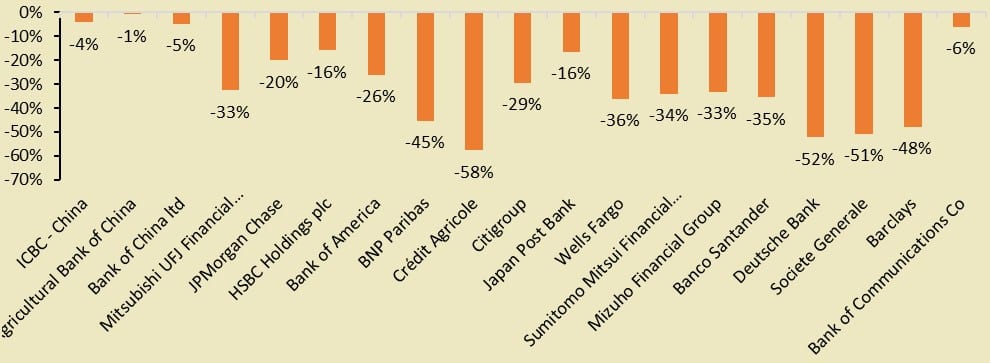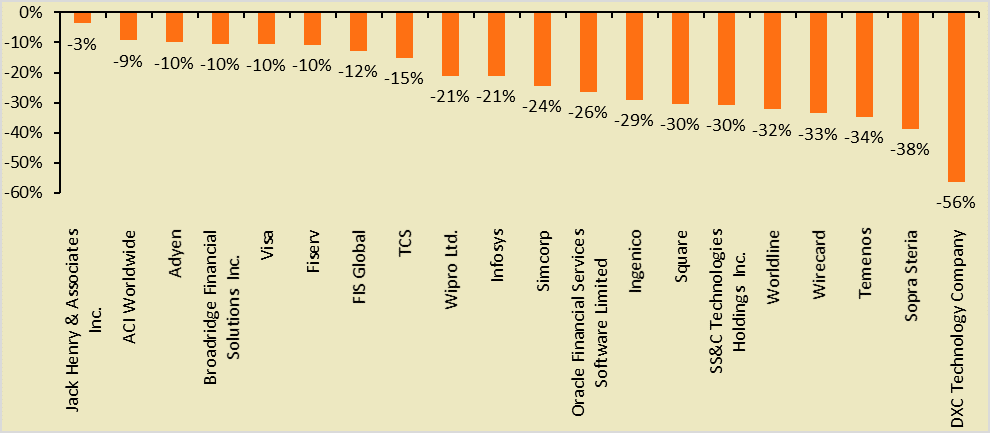U.S. Banks and the COVID-19 Crisis
The speed of the COVID-19 crisis has shocked us all. Any assessment of the scale of the human tragedy or the impact on the economy risks being out of date in short order. Our financial sector is at the forefront of the COVID-19 impact on the global economy given the integral role financial services play in the economy. For Banks, one conclusion we can make with confidence is that this time is very different from the global financial crisis in 2007-2008.
The COVID-19 crisis is having an immediate impact on the real economy as travel is curtailed and business activity, especially consumer led sectors such as hospitality and travel, has dropped precipitously. In contrast during the crisis of 2007-2008 the broader economy entered a recession due to issues that originated in the financial sector.
The U.S. banking system is significantly stronger than the last crisis with amounts of capital and liquidity far above required regulatory amounts having been built-up since 2007-2008. The U.S. regulators confirm that in the United States “the largest banking organizations hold $1.3 trillion in common equity and $2.9 trillion in high-quality liquid assets (HQLA).” The banks have sufficient capital and liquidity to support their corporate and retail customers through this difficult time (which is what regulators, politicians and the public will expect them to do). Furthermore, some large U.S banks recently announced they will conserve capital by suspending stock buybacks.
Of course, the experience of regulators, banks, and authorities during the last financial crisis has informed a wide range of actions during the last ten years meant to strengthen banks, including stronger capital and liquidity requirements. This has also included a focus on managing the range of operational risks that are critical in dealing with this crisis, including not losing sight of new cyber threats that may surface as a result.
What are U.S. banks doing today? Their most immediate priority is to ensure continued operations of their business by implementing business continuity plans (BCP) lead by senior management. These plans will focus on ensuring the safety of their staff and customers. Key actions given the risk of COVID-19 will include firewall type arrangements such as separating staff into various teams working from different locations and even sub-teams with such mundane arrangements as using different building entrances etc. The investment in duplicate facilities and capacity, enabling banks to continue to operate such activities as trading floors and processing centers, is integral to a robust BCP. Aside from the new physical aspects of operating, banks will also need to address the cultural and behavioral aspects of remote working models at a scale not previously imagined.
Given the immediate impact the COVID-19 crisis is having on the real economy through job losses and business closures, banks have customers who are now unable to make loan repayments and pay credit card bills, etc. The U.S. regulators are encouraging banks to provide relief to individuals whose changed circumstances mean they are unable to service their obligations (this includes not requiring a relaxation of loan terms to trigger a downgrade in the loan classification) or need relief from such charges as early deposit breakage fees and ATM fees. Many companies have a near-term liquidity squeeze that will look to their banks for relief and support.
How will Banks proceed after their near-term crisis management? The direct impact of the COVID-19 crisis and the various actions taken by Central Banks and governments worldwide will have long-term ramifications for Banks. For example, the monetary policy resulting in record low U.S. dollar interest rates will adversely impact the profitability of U.S. banks.
The credit quality of banks’ loan portfolios will deteriorate due to the forecast now of a global recession (S&P Global forecasts effectively zero growth in the U.S. for 2020). The rapid increase in job losses will soon have a material impact on retail credit costs, including mortgages and credit cards. Banks with exposures to companies in the industries most adversely impacted will likely soon experience significant deterioration of their loan portfolios and sharp increases in the cost of credit. For larger companies, their inability to access capital markets will likely increase their reliance on banks for some time to meet their funding needs. While there were already some signs that the 10+ year benign credit cycle was coming to an end, it is almost certain that this will now accelerate, leading to some weaker companies no longer being able to access credit unless there is significant governmental intervention.
Some trends will continue as before this crisis. The investments that banks are making in technology to create a digital environment, including moving more transactions to online banking, will likely accelerate. The “lower for longer” interest rate environment and increasing credit costs mean that improving efficiency will be an even higher priority, including reducing branch footprints and implementing radical new ways of working that won’t require as much commuting to high-rent central business districts. Longer-term, these industry dynamics provide an even greater incentive for increasing the pace of industry consolidation (there are over 5,000 banks in the United States).
Banks in the United States have exceptionally strong balance sheets and liquidity positions. Furthermore they are better prepared than ever operationally to handle this crisis. We are still learning about both the human impact and the impact on the real economy of this crisis. Although, for banks, we already know they are better positioned than ever to fulfill their role in supporting a strong financial system while meeting their customer’s needs during this challenging period.
Mark T. Robinson, a Senior Advisor to Cedar, is a banker with an extensive banking career including as CEO of ANZ EMEA, CEO of Citi South Asia, and, most recently, as CEO of a UAE based bank. He has a BA and MBA from the University of Chicago.










